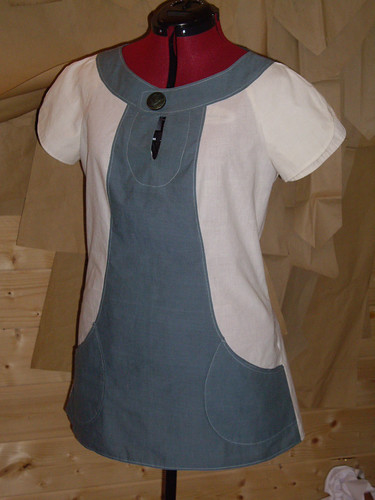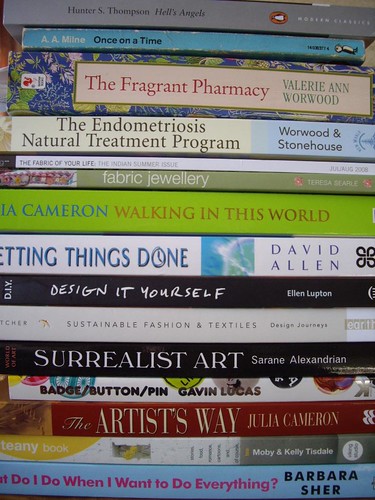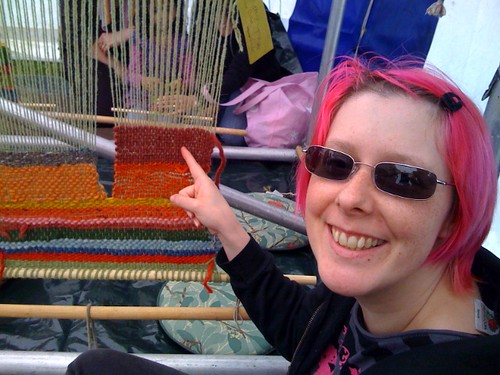Today my plan was to draft some paper patterns for three or four different styles of skirt that I’ve been thinking about for a little while. I know the average sizes of myself, my friends and family, and my repeat customers, but I thought I’d better do a little bit of research and find out what sizes other people were using for their clothes.
I’m making skirts, so I’ve focussed entirely on waist and hip measurements here.
The sizes shown below are all taken from the charts on the stores’ websites. All of the measurements given are for a UK size 14. They’re in centimetres.
| Shop |
Waist |
Hips |
| M&S |
79 |
104 |
| Evans |
80 |
101 |
| Top Shop |
79.2 |
101.5 |
| Dorothy Perkins |
78 |
101.5 |
| John Lewis |
77 |
102.5 |
| Next |
76 |
100.5 |
| Miss Selfridge |
79 |
101.5 |
| Principles |
78 |
101.5 |
| Debenhams |
76-80 |
99-103 |
| British Home Stores |
78 |
103 |
| New Look |
81 |
104 |
| Monsoon |
76.5 |
102 |
| River Island |
77 |
102 |
| Wallis |
78.5 |
104 |
| H&M |
76 |
100 |
| Oasis |
77 |
104 |
| French Connection (FCUK) |
79 |
104 |
| Kew |
79 |
104 |
| Karen Millen |
78 |
104 |
| Hobbs |
81 |
106 |
| Jigsaw |
79 |
104 |
| Coast |
80 |
105 |
| Warehouse |
79 |
102 |
These are the measurements from two of the industry standard pattern cutting books, from which students learn to draft their clothing patterns.
Fabric, Form and Flat Pattern Cutting , 2nd Edition (1996/2007) , 2nd Edition (1996/2007) |
| Size |
|
10 |
12 |
14 |
16 |
18 |
20 |
22 |
|
|
| Waist |
|
62 |
67 |
72 |
77 |
82 |
87 |
92 |
|
|
| Hips |
|
87 |
92 |
97 |
102 |
107 |
112 |
117 |
|
|
Metric Pattern Cutting , 4th Edition (revised 1997) , 4th Edition (revised 1997) |
| Size |
8 |
10 |
12 |
14 |
16 |
18 |
20 |
22 |
24 |
26 |
| Waist |
62 |
66 |
70 |
74 |
78 |
82 |
86 |
92 |
98 |
104 |
| Hips |
68 |
90 |
94 |
98 |
102 |
106 |
110 |
116 |
122 |
128 |
In the first set of measurements, there is a 25cm difference between the waist and hip measurements, and an average of 5 cm between each size.
In the second set, there is a 24cm difference between the waist and hip measurements, and 4 cm difference between each size, but the measurements given for each size are now larger. A person who would have worn a size 10 in the first set of measurements would now be wearing a size 8.
Despite this, the most recent measurements given in the pattern cutting books for a size 14 are still at least one size smaller than those given in the stores. Having said that, the charts in the pattern book are eleven years old. I know that the 5th edition of Metric Pattern Cutting is due out very soon, so it’s possible that the measurements given for each size may now be more in line with those shown by the stores.
is due out very soon, so it’s possible that the measurements given for each size may now be more in line with those shown by the stores.
But if the clothing that’s in the stores isn’t the same size as the measurements on the size charts, how can anybody possibly know what size to choose?
According to the pattern cutting books, I’m a size 18-20. Looking at the stores’ size charts shown above, a size 14 should be much too small for me. However, I know from experience that I can usually fit comfortably into a size 14 from any of those shops. In a commercial dress pattern, I sew anything between a size 12 and a size 20, depending on the style of the garment and the amount of design ease that has been allowed.
So, the answer would seem to be to provide exact measurements for each garment that I make – and in fact I will make my own size chart on that principle. But this does assume that people know what size they are, and most people simply don’t.
For example, if I was to buy a size 14 skirt from one of the shops listed above, I should theoretically be able to assume that my waist measurement falls into the range 76-81 cm. Even though this is a pretty large size range for a single garment, in fact my actual waist measurement is much larger. Then there’s the added complication that modern skirts and trousers are cut to fit far lower on the body than the natural waist, which means that the waist sizes given on the charts bears absolutely no relation to the measurements of the actual garment.
As a dressmaker I have a house full of tape measures, and I measure myself on a regular basis so that I can work out which size to choose for my next creation. It’s easy for me to forget that this is not normal for most people!
Perhaps I should offer a handy measuring pack, with a tape measure and a little chart showing where to take the measurements. Once people knew their actual dimensions, then they could more confidently choose the right size of garment according to my chart.
This is quite important, as all of my clothes are made by hand from limited stocks of fabric. If somebody buys a garment and finds that it doesn’t fit, I’ll willingly exchange it, but I can make no guarantees that I’ll have enough fabric left to make another one exactly the same.
Given that I’m planning to offer a new range of clothing in multiple sizes, I need to have a set of basic patterns that I can use over and over again. (The cost of drafting a new pattern for each individual customer is rather prohibitive.) Having a standard range of sizes definitely makes this much easier from a manufacturing point of view. The difficult part is going to be to come up with a range of sizes which genuinely reflect the actual dimensions of the garment, and will fit as many people as possible.
Wish me luck!
Like this:
Like Loading...










